Master, Doctor Tran Lam Khoa, a doctor specializing in high-risk pregnancies at the Obstetrics and Gynecology Center of Tam Anh General Hospital, said that Thanh An (7 days old, Ho Chi Minh City) was diagnosed with a diaphragmatic hernia at the 21st week of pregnancy. At that time, part of the baby's liver, gallbladder, small intestine and large intestine protruded into the right chest cavity, causing severe lung hypoplasia.
After listening to the doctor thoroughly explain the risks of the disease, the baby's mother had amniocentesis to look for possible genetic abnormalities, and at the same time had a specialized fetal echocardiogram and MRI to contribute to a better prognosis for the baby.
At the 38th week of pregnancy, the fetus had pericardial effusion and polyhydramnios. Dr. Lam Khoa and the family agreed to have the baby delivered by cesarean section. The baby weighed 3.2 kg at birth.
Immediately after birth, baby An fell into respiratory failure due to pulmonary hypertension (increased pressure in the pulmonary circulation), was intubated and was dependent on a ventilator 24/7. At this time, if surgery was performed immediately, the mortality rate would be very high due to the unstable respiratory condition. On the contrary, if left too long, the chance of survival would be slim due to prolonged pulmonary hypertension and subsequent opportunistic infections.
“The only solution to save the baby’s life is intensive care in the NICU with a ventilator, vasopressors, pulmonary vasodilators, intravenous nutrition, etc. to stabilize hemodynamics as soon as possible, creating the premise for a safe surgery,” emphasized Dr. Do Huu Thieu Chuong, Deputy Director of the Neonatal Center of Tam Anh General Hospital.
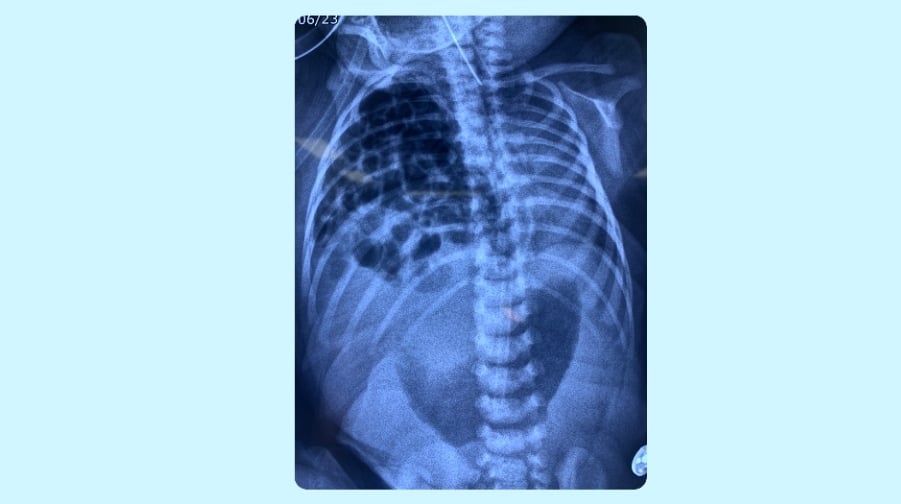
Ultrasound images show the girl's entire intestines and part of her liver escaping through her diaphragm. Photo: Ha Vu
When baby An was 4 days old, the diaphragmatic hernia surgery was performed. Dr. Nguyen Do Trong, Cardiovascular Surgery - Pediatric Surgery specialist at Tam Anh General Hospital, and his team moved the misplaced organs back to their correct positions and then sutured the diaphragm. After 1 hour, the surgery was completed.
Three days later, baby An was weaned off the ventilator, learned to breastfeed and was able to defecate, and his pulmonary artery pressure was well controlled. “Baby An’s spectacular recovery just a few days after surgery has confirmed the importance of the “tripod” of Obstetrics and Gynecology - Neonatology - Pediatrics in saving the lives of babies with complex congenital malformations,” shared Dr. Nguyen Do Trong.
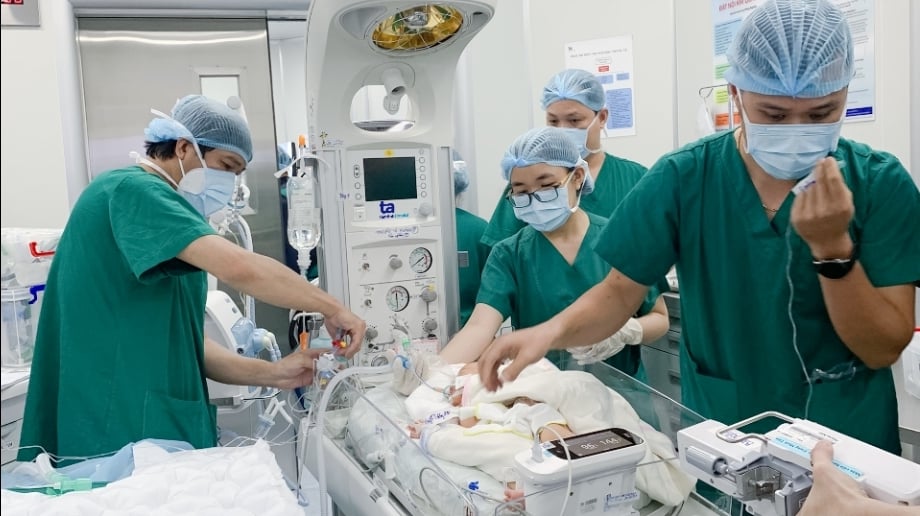
Baby An received intensive care immediately after birth. Photo: Ha Vu
The diaphragm is a dome-shaped muscle barrier located between the chest cavity and the abdominal cavity; separating the heart, lungs from the organs in the abdominal cavity (stomach, intestines, spleen, liver). The rate of congenital diaphragmatic hernia in children is about 3/10,000 cases. Of which, right diaphragmatic hernia is about 20% of cases; causing the liver and intestines to move up to the chest through a hole (gap) in the diaphragm and compress the right lung.
Many cases of children not being screened prenatally or diagnosed late make treatment difficult, even leaving complications affecting health.
Dr. Do Huu Thieu Chuong said the most important factor contributing to saving baby An's life was that the baby was discovered to have a diaphragmatic hernia while still in the womb, helping doctors plan to monitor the pregnant woman and take care of the baby promptly after birth.
The "golden" time to perform diaphragmatic hernia surgery is 3-5 days after birth, provided that pulmonary hypertension is well controlled. Severe cases of respiratory failure due to pulmonary hypoplasia and pulmonary hypertension may require the use of ECMO (artificial heart-lung support) to maintain stable hemodynamics.
Detecting a fetus with congenital diaphragmatic hernia helps doctors plan to monitor the pregnant woman and care for the baby after birth in a timely manner. Currently, there is no way to prevent this condition because the cause is unknown. Therefore, pregnant women need to follow the examination schedule to screen the fetus and diagnose the disease for appropriate treatment.
Source






![[Photo] Binh Trieu 1 Bridge has been completed, raised by 1.1m, and will open to traffic at the end of November.](https://vphoto.vietnam.vn/thumb/1200x675/vietnam/resource/IMAGE/2025/10/2/a6549e2a3b5848a1ba76a1ded6141fae)



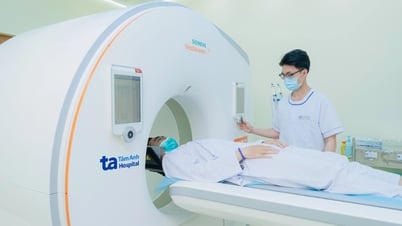

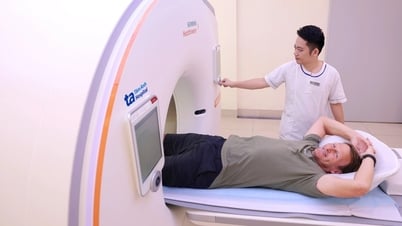





![[Video] Ministry of Health issues document to rectify medical examination and treatment work](https://vphoto.vietnam.vn/thumb/402x226/vietnam/resource/IMAGE/2025/10/2/54913f30a9934e18bcbb246c2c85f11d)




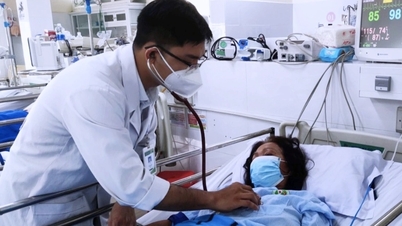













































































Comment (0)